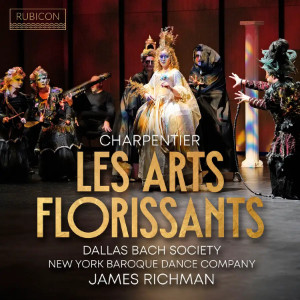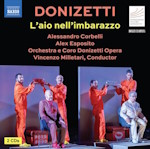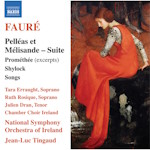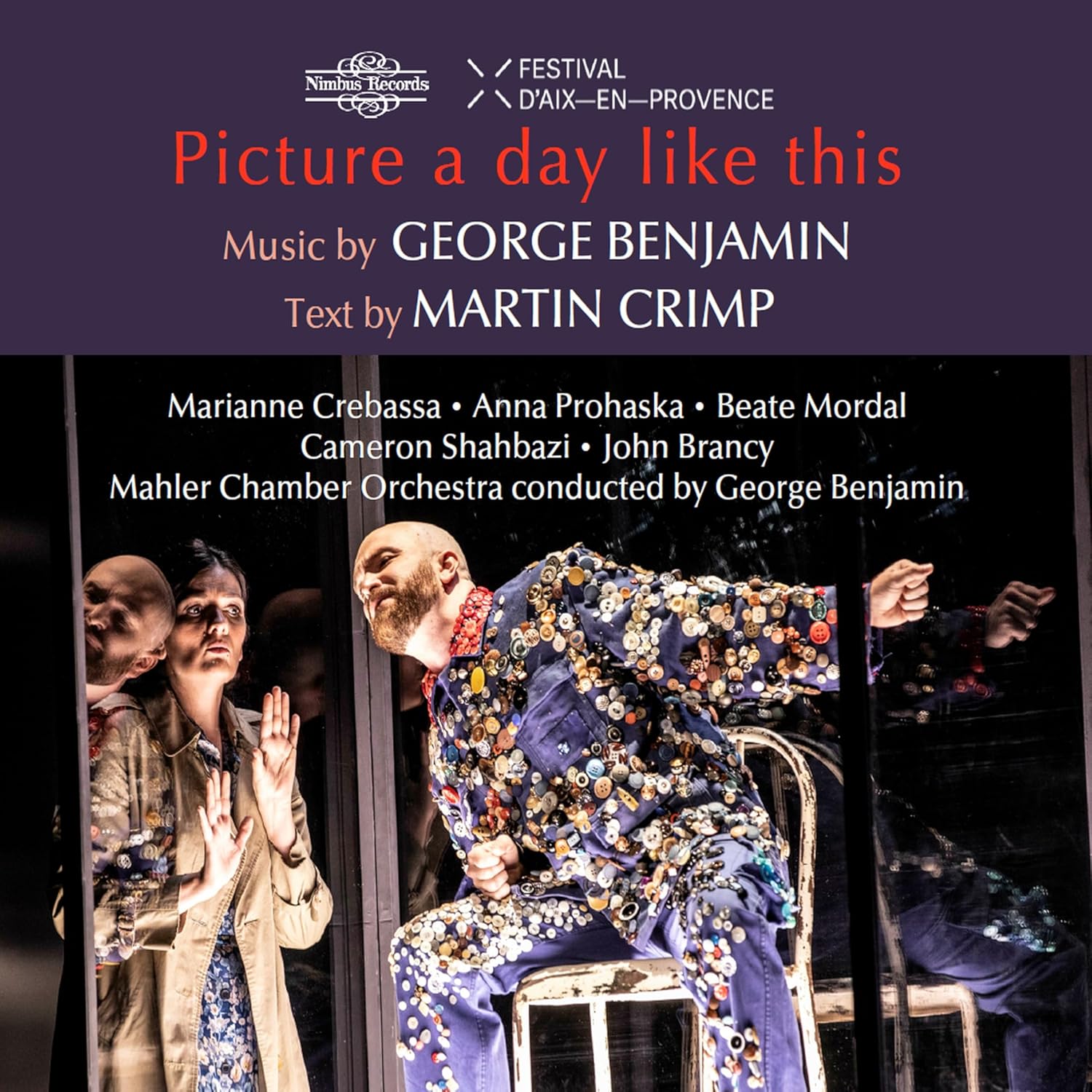
Marc-Antoine Charpentier (1643-1704)
Les Arts Florissants (H 487)
Sonata a 8 (H 548)
Dallas Bach Society, New York Baroque Dance Company/James Richman
Texts and translations included
Reviewed as a download
Rubicon Classics RCD1128 [66]
William Christie is one of the pioneers of the revival of French baroque music and the oeuvre of Marc-Antoine Charpentier in particular. The name of his ensemble was derived from the work by Charpentier that is the subject of the disc under review.
In New Grove‘s work-list Les Arts Florissants is ranked among the dramatic works, and is called an opera, whereas the booklet to the present disc calls it an idyle en musique. It was certainly not intended for performance at the Opéra, which was entirely dominated by Jean-Baptiste Lully. The small instrumental scoring for two treble viols, two recorders and basso continuo rather points in the direction of a performance in more intimate surroundings. Charpentier seems to have modelled it after works that were performed at the court in Versailles, which were generally referred to as Appartements, short for Soirées d’Appartements, evening gatherings during the winter season in the Grand Apartments of the Versailles palace. This may explain why this piece sings the praises of Louis XIV; the action is also situated in the palace. However, in this case it is almost sure that it was not performed at the palace, as the manuscript bears the names of singers who were in the service of Mlle de Guise, for whom Charpentier worked a number of years and who had her own chapel.
The story of the opera concerns the eponymous Arts (music, poetry, painting, architecture), shown flourishing under the beneficent and peaceful reign of Louis XIV, as they and a group of warriors become drawn into a dispute between the central characters of Peace (La Paix) and Discord (La Discorde). After a brief struggle in which Discord and his Furies gain the upper hand, Peace appeals to Jupiter to intervene on her behalf. Discord and his followers are chased back into Hades by a hail of thunderbolts, and Peace holds sway once more. In particular Scene 2 is quite dramatic, both in the vocal and the instrumental parts. In his lyrics Architecture associates the palace with the figure of the King, another token of the connection between this work and Versailles.
The work is a sequence of solos (récits), choruses and dances. The choruses are sung by the six soloists, who are joined by two additional basses. The singers have all very fine voices, well suited to this kind of repertoire, and do an excellent job in the portraying of their respective characters. Haley Sicking (La Paix) and Patrick Gnage (La Discorde) are the perfect antipodes; the latter shows a good feeling for the dramatic features of his role. Fortunately, this element is not exaggerated. This work was meant as entertainment, after all.
From a stylistic point of view things are less convincing; in this respect, Kara McBain makes the best impression. The main issue is, as so often, that nearly every singer uses a bit too much vibrato. It is mostly not very wide, but it is disappointing nevertheless. That also goes for the use of a modern pronunciation, which regrettably is still pretty common. It is hard to understand why performers are willing to use a historical pronunciation in sacred music, but refuse to do the same in secular repertoire.
In this recording the singers and the small instrumental ensembles are joined by the New York Baroque Dance Company. It is a bit of a mystery why they are involved in a recording without any picture. As the booklet does not specify their members, I wonder what exactly their role may be. The playing of the dances is excellent, and it is certainly right that James Richman decided to stick to the small line-up indicated in the score. The two string parts are – according to New Grove – scored for two treble viols. Here they are played by two violins, which may not be that much of a problem; violins were used in secular music, for instance in the opera, and probably more common than treble viols. The participation of a cello is anachronistic, though. In France at the time of Charpentier the cello – a typically Italian instrument – was not used. That is confirmed by the scoring of the Sonata a 8, one of the few purely instrumental works in Charpentier’s oeuvre.
It is scored for two German flutes (meaning transverse flutes), two violins, bass viol, basse de violon à 5 cordes, harpsichord and theorbo. The sonata dates from about the same time as François Couperin composed his first sonatas for instrumental ensemble. The scoring for violins indicates the influence of the Italian style. The bass viol, on the other hand, was a symbol of the French style. The second movement is a récit for the bass viol. Later there is another récit, this time for the basse de violon. This instrument, better known as bass violin, was common in France, but that was an instrument with four strings. Here Charpentier specifies an instrument with five. Jérome Lejeune, in his liner-notes to the recording by the ensemble Les Dominos (Ricercar, 2013), observes a strong resemblance to the violoncello piccolo that Bach later used in some of his works. Could it have been a specially constructed instrument? Whatever is the case, it is not the same instrument as the cello, which is mentioned in the booklet as ‘translation’ of the term basse de violon. Its participation in Les Arts Florissants is historically wrong, but musically not much of a problem, as it only plays in the basso continuo section, but it is musically unsatisfying in the sonata.
That piece brings me to some comments on the booklet. It includes liner-notes by James Richman which are rather general about Charpentier and his music, and an expression of his enthusiasm about them. There is no information whatsoever on the two works; the sonata is not even mentioned. Something has gone wrong in the printing of the libretto, and as a result the listener could easily lose track. The fourth scene opens with a solo of La Paix in two stanzas, which are separated by an instrumental ritornello; that is not indicated. The solo is followed by a menuet pour les violes et les flûtes, which closes the scene. The indication of the beginning of the fifth scene is printed in the wrong place. It opens with ‘Charmante paix’, which is marked as a chorus, but that text is first sung by La Musique. The libretto in the booklet ends with a solo for La Paix, but in fact it ends with a Choeur des Arts et des Guerriers. A little more careful proofreading would have been useful.
All in all, this is a respectable and in many ways enjoyable recording of two fine works by Charpentier. Those who don’t know his music will get a very good impression of his brilliance and invention. In the case of Les Arts Florissants the recording of the Boston Early Music Festival Vocal & Chamber Ensembles, directed by Paul O’Dette and Stephen Stubbs (review), remains first choice.
Johan van Veen
www.musica-dei-donum.org
twitter.com/johanvanveen
https://bsky.app/profile/musicadeidonum.bsky.social
Buying this recording via a link below generates revenue for MWI, which helps the site remain free


Soloists
Kara McBain (La Musique), Haley Sicking (La Paix), Stéphanie Varnerin (La Poésie) (soprano), Dianna Grabowski (L’Architecture) (mezzo-soprano), Matthieu Peyrègne (La Peinture) (tenor), Patrick Gnage (La Discorde), David Grogan, Andrew Dittman (Guerriers), bass

















